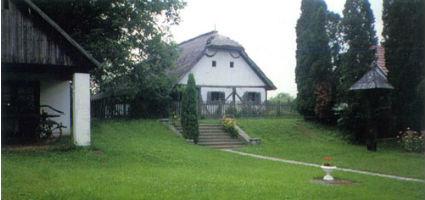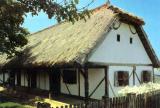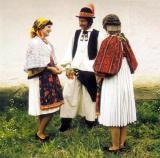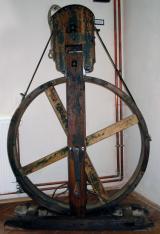2024. April 26. Friday
Géza Kiss Ormánság Museum and Region House - Sellye
 |
Address: 7960, Sellye Köztársaság tér 6.
Phone number: (73) 480-245, (73) 480-201
Opening hours: 01.11-31.03.: Tue-Sun 10-14
01.04-31.10: Tue-Sun 10-16 (On prior notice: beyond the opening hours as well) |
At the beginning of the 1950'ies a few devoted teachers and educational experts decided to found a museum in Sellye, the "capital" of Ormánság region… The collection was placed in the ethnographic department of the Janus Pannonius Museum, and in return the museum arranged an exhibition for the collection in Selye. This exhibition was opened in the Draskovich mansion on 4th April 1960, under the title of The Popular Arts of Ormánság.
Further collection works brought about new materials, and as the mansion turned into a youth hostel, the exhibition had to be moved into the building of the local council. The thought came to mind that the materials collected by Gizella Böhönyei, Sándor Fekete, László Jelics, Jenő Pápay, Lajos Varga, Zoltán Vass, János Zentai and others should deserve a more extensive exhibition.
The exhibition still seen today was opened in October 1966 in the building of the former Catholic school. This exhibition was extended in October 1967. In October 1968 an outdoor museum was founded, the main attraction of which was the peasant house built on four legs. Later a stable, a stud and a traditional well (shadoof) were also built in the yard. The statue of Géza Kiss - made by Károly Stöcker - was uncovered on 12th October 1969.
A barn, a bell-tower and a smith shop were also built as the exact replicas of the buildings found in the villages of the region. That is how the Géza Kiss Ormánság Museum gradually improved into its present form.
Further collection works brought about new materials, and as the mansion turned into a youth hostel, the exhibition had to be moved into the building of the local council. The thought came to mind that the materials collected by Gizella Böhönyei, Sándor Fekete, László Jelics, Jenő Pápay, Lajos Varga, Zoltán Vass, János Zentai and others should deserve a more extensive exhibition.
The exhibition still seen today was opened in October 1966 in the building of the former Catholic school. This exhibition was extended in October 1967. In October 1968 an outdoor museum was founded, the main attraction of which was the peasant house built on four legs. Later a stable, a stud and a traditional well (shadoof) were also built in the yard. The statue of Géza Kiss - made by Károly Stöcker - was uncovered on 12th October 1969.
A barn, a bell-tower and a smith shop were also built as the exact replicas of the buildings found in the villages of the region. That is how the Géza Kiss Ormánság Museum gradually improved into its present form.


